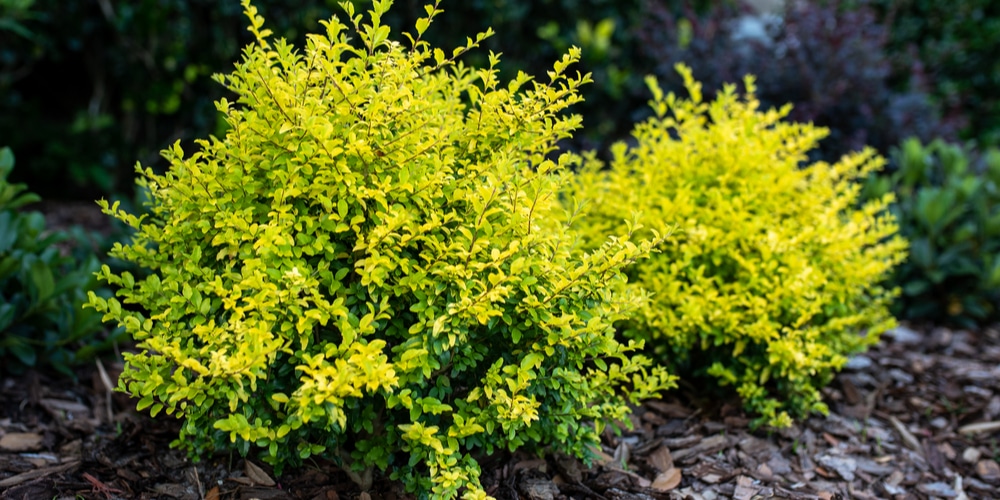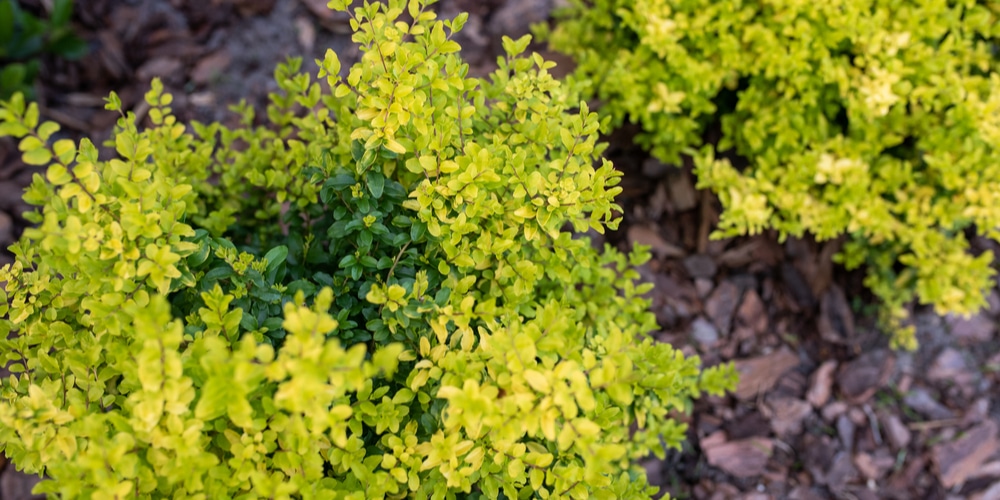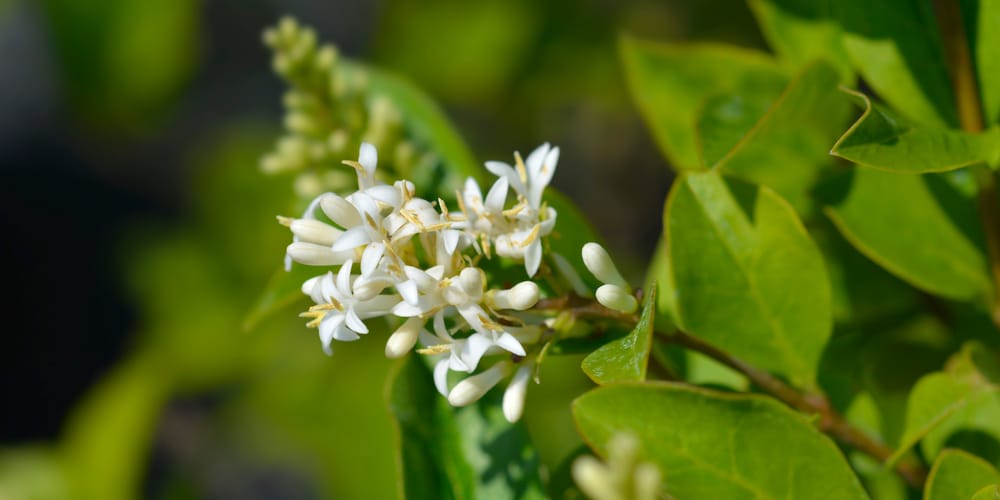The Ligustrum tree is an evergreen shrub or small tree commonly used in borders, hedges, and accent landscapes.
| Botanical Name | Ligustrum lucidum |
| Common Name | Glossy Privet, Broad Leaf Privet |
| Plant Type | Perennial |
| Flower Color | Long clusters of white blooms |
| Size When Mature | 180 to 480 inches |
| Bloom Time | Late spring to late summer |
| Sun Requirements | Full sun, partial shade |
| USDA Hardiness Zones | 7 to 10 |
| Soil PH Range | 6.0 to 8.0 |
| Soil Type | Well-drained, sandy, loam |
| Water Needs | Medium |
| Native Area | China |
What you Need to Know About the Ligustrum Tree
The Ligustrum tree has many nicknames, including tree privet, wax leaf privet, Chinese privet, and glossy privet, and can be used to describe several ligustrum varieties such as ligustrum japonicum and ligustrum sinense, among others.
The hardy semi-evergreen features multiple trunks and can be trained into a small tree or shrub. Its toughness makes Ligustrum the ideal choice for no-fuss hedges or privacy screens, as well as a set-and-forget landscape piece in your yard.
Come late spring or early summer the privet tree produces long clusters of white blooms near the branch edges. It’s worth noting that privet has a fast growth rate and can extend around 20 to 25 inches or so annually, which calls for regular pruning to help keep the plant in shape.
How to Care for the Ligustrum Tree
Here’s everything you need to know about growing and caring for a thriving Glossy Privet
Light
The Broad Leaf Privet is a favorite among gardeners and homeowners due to its ability to adapt to any outdoor environment. That, coupled with its quick-grow capacity makes Ligustrum the top choice for ‘instant’ hedges or privacy screens.
As far as lighting is concerned the privet can thrive in partial shade, or areas that get less than four hours of direct sunlight each day. In the shade, the ligustrum won’t grow as quickly or produce as much foliage. For optimal growth and health, it’s recommended that you plant your ligustrum in a place that gets more than 6 hours of sun.
Water and Soil Needs
The good news is that the Glossy Privet can accept most soil types, except those that contain a lot of salt and are poorly draining. Garden soil or potting mix should be enough to meet the semi-evergreen shrub’s pH needs, and if you wish to make the medium richer you can amend with aged compost or a slow-release fertilizer.
The Ligustrum tree can take hot summer days in stride and is fairly drought tolerant. However, if you want a full-looking shrub or tree specimen in your yard then you should keep your privet well-watered. Keep the soil moist during the first year, then slowly reduce irrigation as the Glossy Privet matures.
Temperature Requirements
Nearly all ligustrum varieties are rated hardy in zones 7 to 10, with a few notable exceptions. You can look up a specific ligustrum tree’s hardiness and see if it’s within your climate. In general, ligustrum trees tend to have a degree of cold tolerance of up to 20 degrees F. Anytime the temperature drops below 20 degrees F you should cover it up every day and add mulch to the soil.
Fertilizer
The best fertilizer to use on a Ligustrum tree is a balanced fertilizer mix with an equal NPK ratio.
A 15-15-15 NPK or nitrogen phosphorus potassium mix will serve to feed your Ligustrum tree every growing season. You should apply a full serving of fertilizer at the start of spring, then another when summer comes. The latest is in early fall as the tree may not absorb the nutrients in winter.
When fertilizing your ligustrum tree, you should remember two things- broadcast along the drip line and water the soil after so it seeps into the ground. Don’t forget to follow the manufacturer’s instructions as stated in the label or packaging for the best results.
Alternatively, you can add aged compost or manure, or a slow-release formula at the start of spring to support the privet tree’s growth.
Common Diseases
Privet tree owners should be wary of fungal leaf spots that can affect and ultimately kill your Ligustrum plant.
The fungus is mostly carried in water and moisture, and can quickly invade a ligustrum tree. The good news is that you can avoid the fungal disease by being mindful of when and how you water. Do not water overhead and irrigate only in the morning, and dispose of dead leaves and debris as soon as you see them around your privet tree.
In the event of an infection, you can use a fungicide spray to try and cure your Ligustrum. Prune unwanted branches regularly to promote good airflow and to prevent fungus from forming in damp conditions.
Ligustrum Tree Propagation
You can add to your Ligustrum tree collection by cutting 10-12 inch stems from the parent plant and rooting them in water or a moist growing medium.
Take the cuttings as soon as temperatures start to rise and all risk of frost has passed in your region. Use sharp garden shears or scissors and choose healthy specimens. Strip the lower leaves and plant them in a well-draining sandy mix until you see new growth. The softwood cuttings must be exposed to bright indirect light and in a warm environment for a higher chance of success.
Once the cuttings have 2-inch roots you can transfer them to a larger container or their permanent home.


